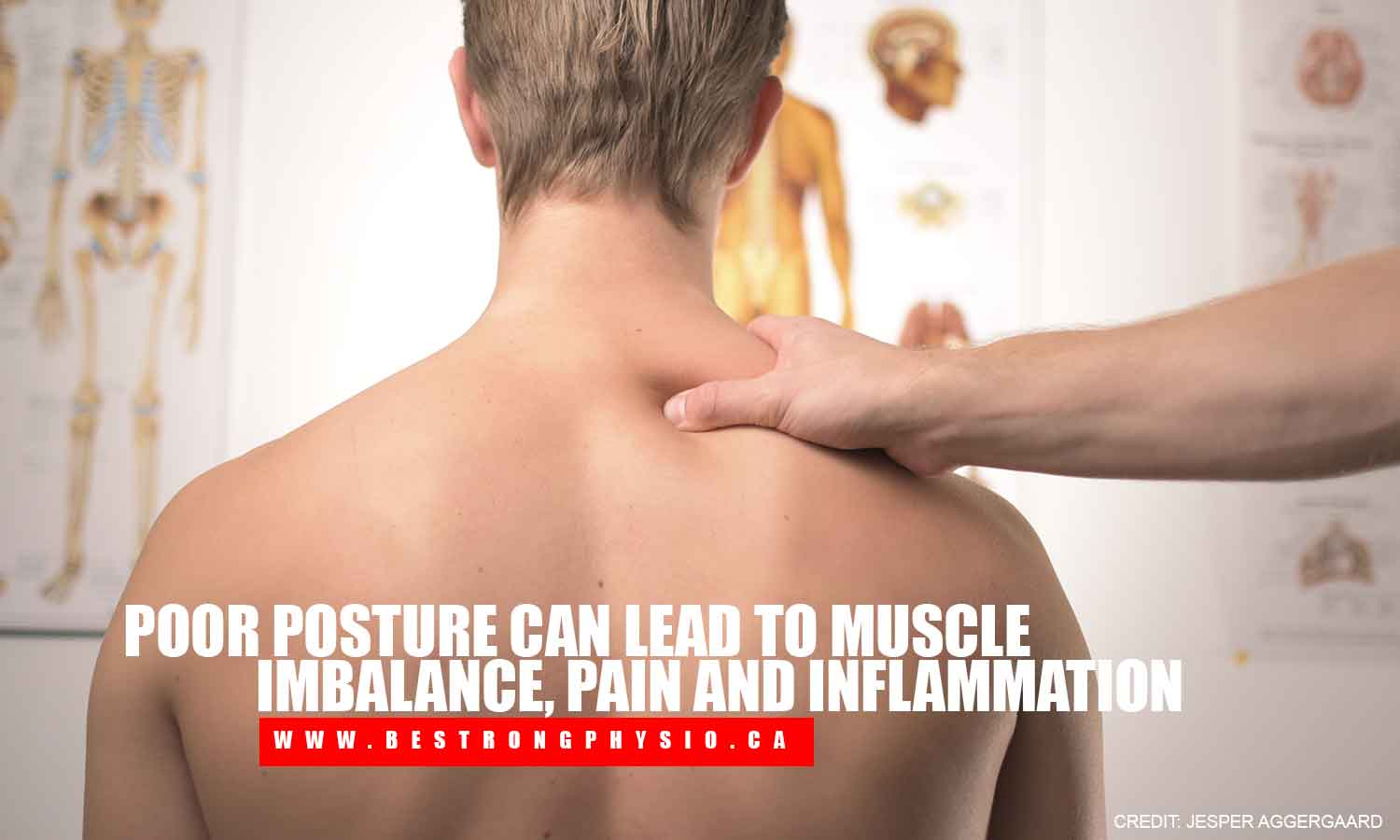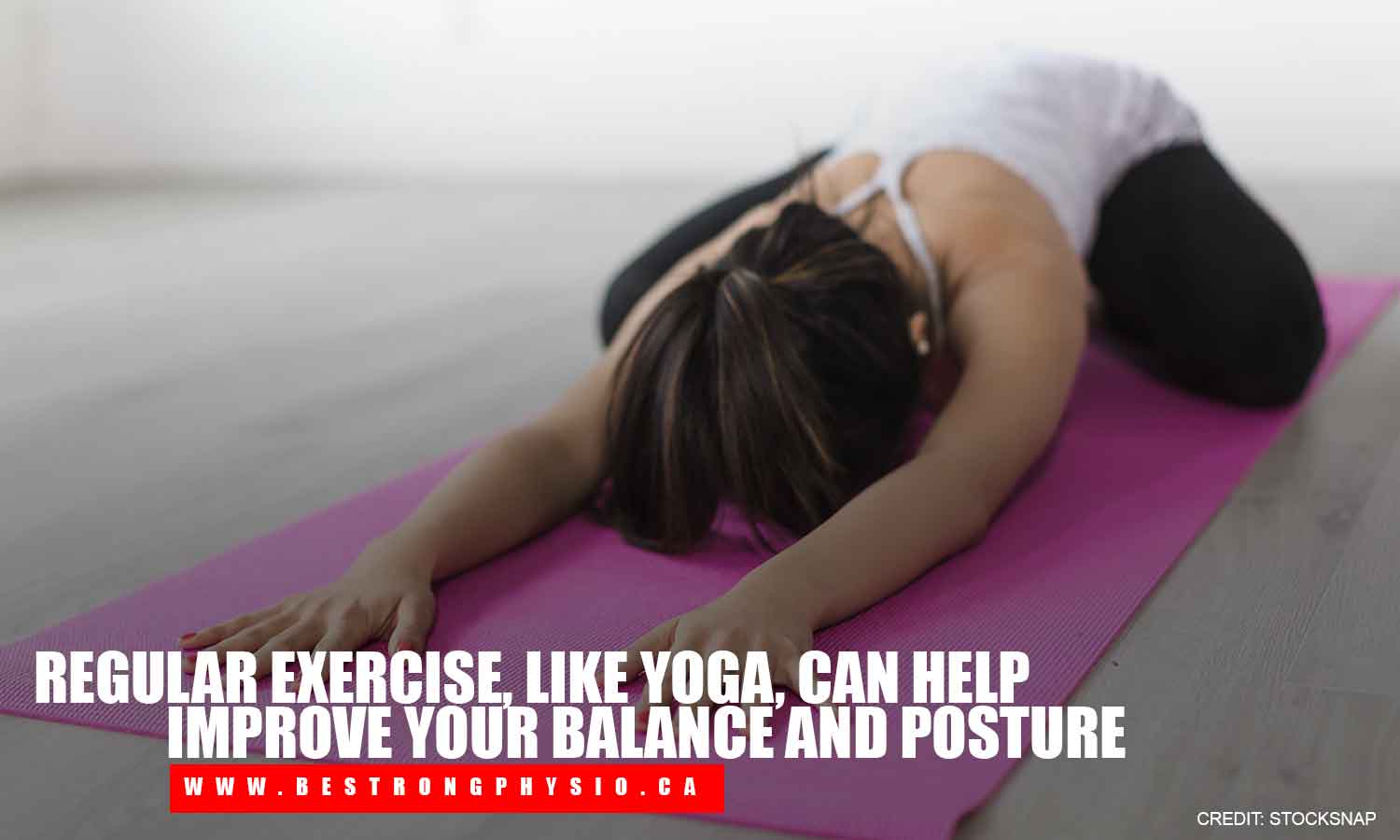The Effects of Bad Posture on Shoulder Pain and Rotator Cuff Injuries
“Stand up straight, shoulders back, neck long, and tuck your belly in,” these are words often repeated by parents, dance instructors, sports coaches, and movement instructors hoping to improve the posture of their young charges.
It turns out we should have been listening. Good posture is not only crucial for balance, it also helps your body maintain correct alignment and helps your muscles and spine move efficiently. By ignoring our stance, we put ourselves at risk for chronic shoulder pain and rotator cuff injuries.
Here is what you need to know about posture and tips on how to improve yours.
What is Posture?
Posture is when your bones and your muscles are in a state of balance and alignment. This means when you have good posture your muscles can support your bones, your bones can support your muscles, and both can support other structures in your body so that everything moves in alignment with efficiency and without strain. It prevents injury when exercising and can help improve balance and performance in almost any physical activity.
What Is Good Posture?

Most of us have been told to sit up straight and keep our shoulders back; however, posture isn’t a rigidly holding yourself in place like a mannequin.
Here is what good standing posture should look like:
- The bottom of your chin should be parallel with the floor
- Your shoulders should be level and back
- Stand with a neutral spine — not leaning forward or backwards
- Hold your arms at your sides, with elbows parallel
- Tuck in your tummy for stability
- Your hips should be level with each other
- Stand with your feet hip-width apart
- Rest your weight evenly on both feet
- Your knees should point forward with a slight bend
What About When Sitting?

A recent study found that Canadians sit an average of 10 hours a day and that most of us don’t have a proper desk setup to help our alignment. Even sitting for more than 4 hours a day can lead to increased risk for many health problems, including:
- Heart Disease
- Diabetes
- Obesity
- Muscle Degeneration
- Back Pain
- Depression
- Dementia
Limiting the time spent sitting, and making sure to maintain a good posture when you are in a seated position will help with some of the back issues.
- Have your chin parallel to the floor
- Keep your shoulders, hips and knees at an even height
- Keep your knees pointing straight ahead.
- Position your computer screen at eye level
Dangers Of Ignoring Bad Posture
Posture affects how you move and how your body is aligned. Slouching, and spending large amounts of time sitting, throws off your balance and your body alignment, which can lead to stiffness and a sore back. You may want to dismiss the odd twinge of discomfort, but it is your body’s way of letting you know that there is a problem. Over time, muscles and soft tissues adapt by either shortening or lengthening. Muscles then become imbalanced, which can cause fatigue, joint stiffness and pain. Ignoring the problem can cause real health problems, including:
- Shoulder impingement – is where the rotator cuff tendons are compressed from improper alignment or repetitive overhead movements. This can lead to inflammation, pain, weakness and a decreased range of motion. Shoulder Impingement is also the cause of a great deal of shoulder pain. Changes in posture from ageing, such as stiffness in the back and shoulders and a hunched spine also create the conditions for shoulder impingement.
- Tendonitis – Slouching puts your shoulder blades out of alignment and throws off the operation of your shoulder blades. This rhythm is called the “scapular humeral rhythm.” Over time, improper movement also creates more wear and tear on the shoulder and can result in tendonitis.
- Muscle imbalance – With poor posture, some back muscles will become stretched out, while others become tight and shortened, leading to a muscle imbalance and improper alignment. Too tight muscles do not work as efficiently or effectively and can lead to back pain.
- Neck pain – With poor posture, many people find they hunch their shoulders and sink their heads into their necks, resulting in their shoulders being up around their ears. This posture tightens the trapezius muscles, which can cause an increase in shoulder pain.

What else can affect your posture
It isn’t always laziness and lack of body awareness. Sometimes poor posture can be caused by other factors, including:
- Lack of muscle strength – if you have weak core muscles (muscles in your back, side, pelvis and buttocks) it can be hard to support your upper and lower body correctly. Strong leg muscles also support your body when standing. Lack of muscle strength can affect your balance and encourage slouching.
- Lack of flexibility – If your muscles are not flexible, they cannot support a full range of movement and may even disrupt your posture by pulling your body out of place.
- Ageing – As we age, posture and misalignment often get worse. TIghtness in the back and arching of the spine can also lead to shoulder impingement. This can lead to rotator cuff injury because of the extra wear on the rotator cuff, causing it to tear and fray.

How To Fix Bad Posture
There are many exercises and things you can do to help improve your posture. The most important part is becoming aware of your bad posture habits and getting into the habit of fixing them. Keeping active, strengthening, and stretching tight muscles is also essential.
- If you are required to be seated for long periods, change your seating posture frequently, and take a break to walk around at least once an hour.
- Alternate shoulders when carrying bags; or if you have small children, be sure to transport babies on the opposite hip.
- Think about the equipment you use daily – if you wear a backpack, be sure to use both straps.
- Consider a standing desk to help keep you active and improve your posture.
- Use a keyboard and docking station at your desk to position your screen and arms to maximize ergonomics.
- Exercise regularly to improve muscle strength and flexibility. Yoga and pilates are excellent for improving balance and alignment.
- Chin tucks – tuck your chin in to open up the back of your neck
- Squeeze your shoulder blades together down your back
- Look up, then down. Look from side to side, moving slowly and evenly.
- Loosen your chest by spreading your arms out to the side and rear.
- Imagine a golden thread is holding your head up, allowing your neck and shoulders to hang relaxed from your spine.
- Remember to keep your shoulders back and low.
- The first step to correcting your posture is becoming aware of bad habits. Take the time now to fix your alignment, sit back and sit up straight and relax your shoulders.

It is never too late to work on improving your posture. With regular stretching, proper alignment, and exercise, you can lower your risk for shoulder pain and rotator cuff injury.
Be Strong Physio has been effectively treating shoulder pain and rotator cuff injuries in Scarborough for years. We have a team of registered physiotherapists and chiropractors ready to help. Contact us to book an appointment, or call 416-792-6440.





